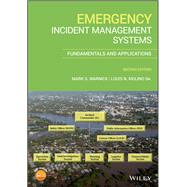The second edition was to be written in order to keep both reader and student current in incident management. This was grounded in the fact that incident management systems are continually developing. These updates are needed to ensure the most recent and relevant information is provided to the reader.
While the overall theme of the book will remain the same of the first edition, research and research-based case studies will be used to support the need for utilizing emergency incident management systems. Contemporary research in the use (and non-use) of an incident management system provides clear and convincing evidence of successes and failures in managing emergencies. This research provides areas where first responders have misunderstood the scope and use of an emergency incident management system and what the outcomes were. Contemporary and historical (research-based) case studies in the United States and around the globe have shown the consequences of not using emergency incident management systems, including some that led to increased suffering and death rates. Research-based case studies from major incidents will be used to show the detrimental effects of not using or misunderstanding these principles. One of the more interesting chapters in the new edition is what incident management is used around the world.








